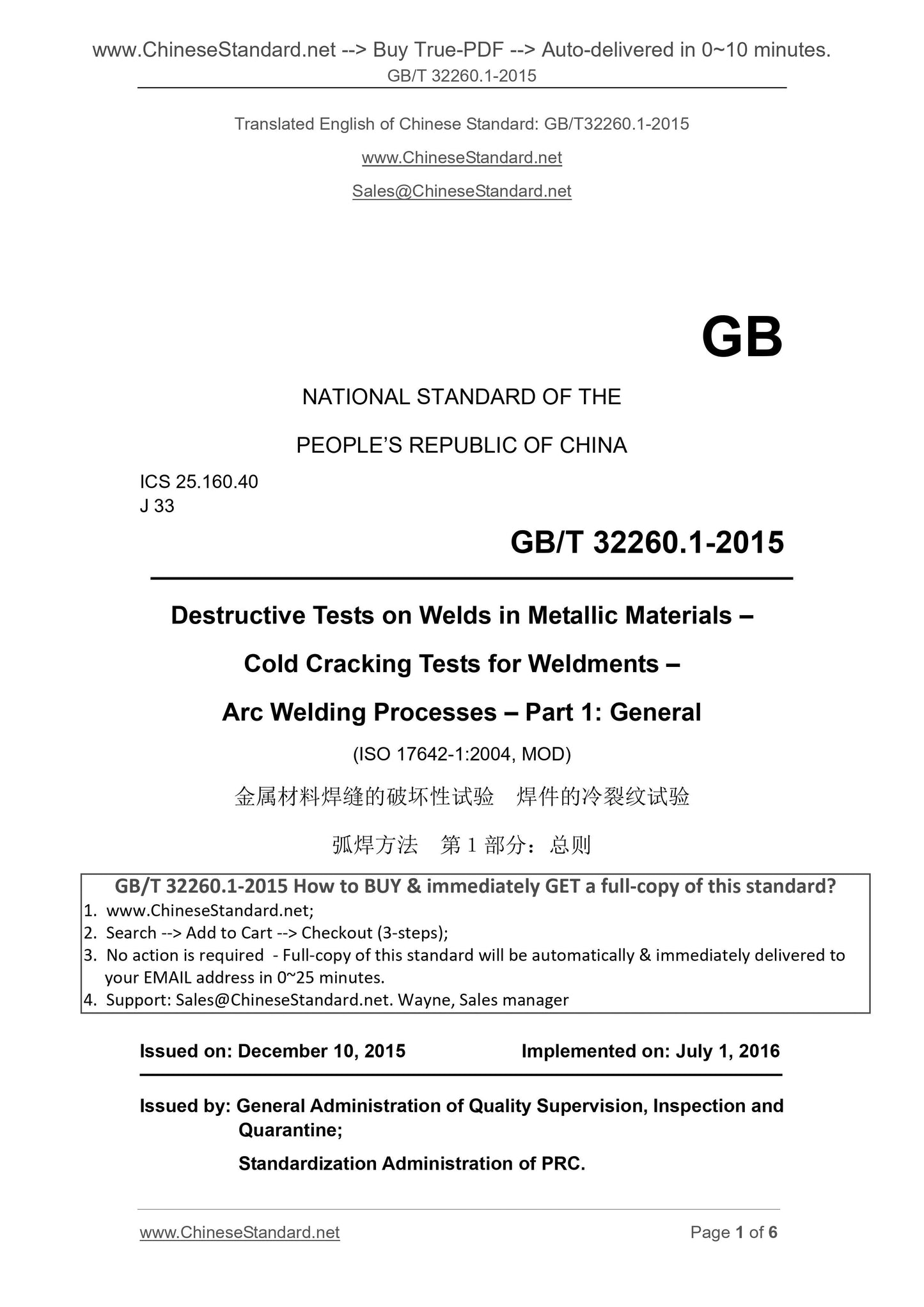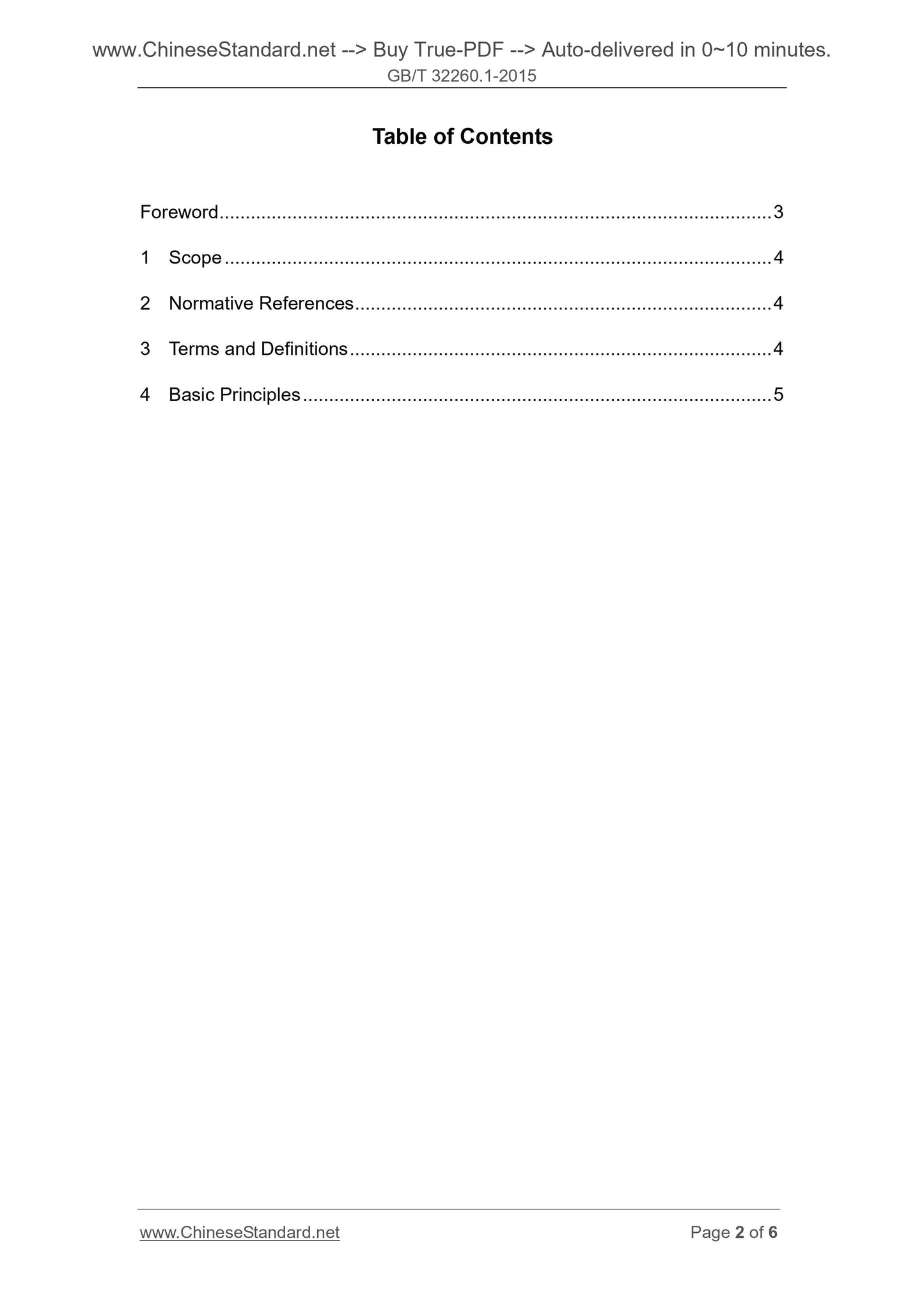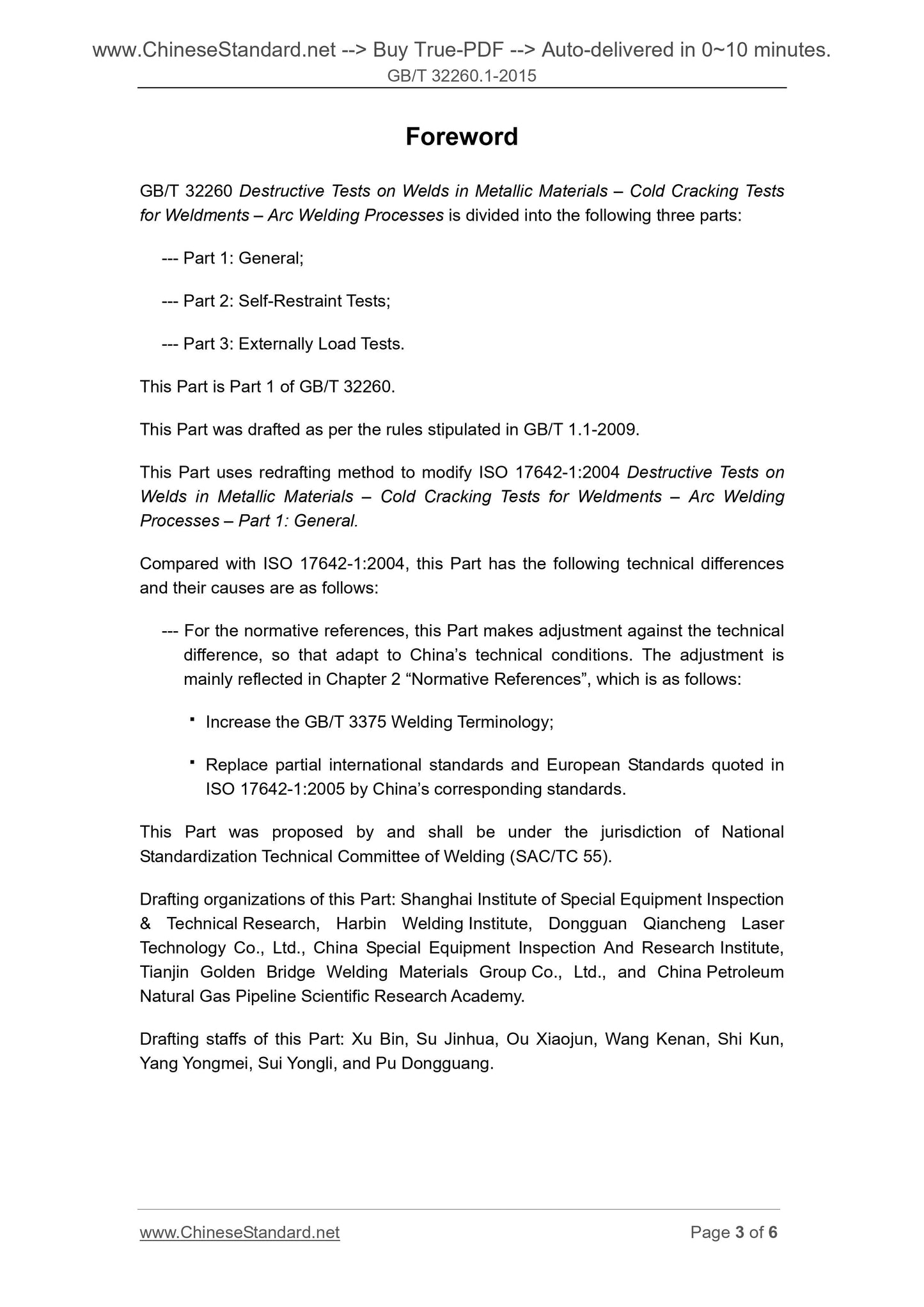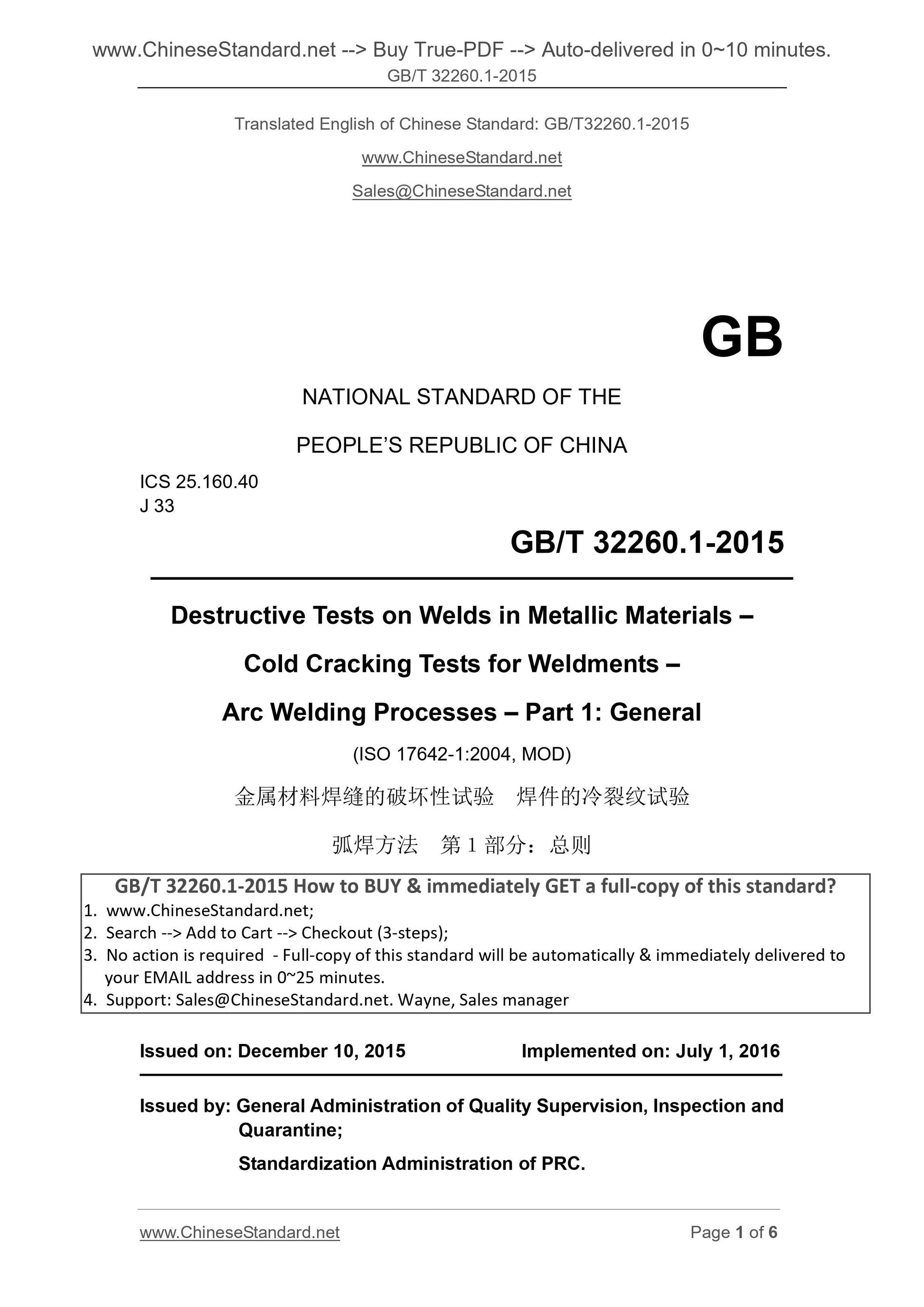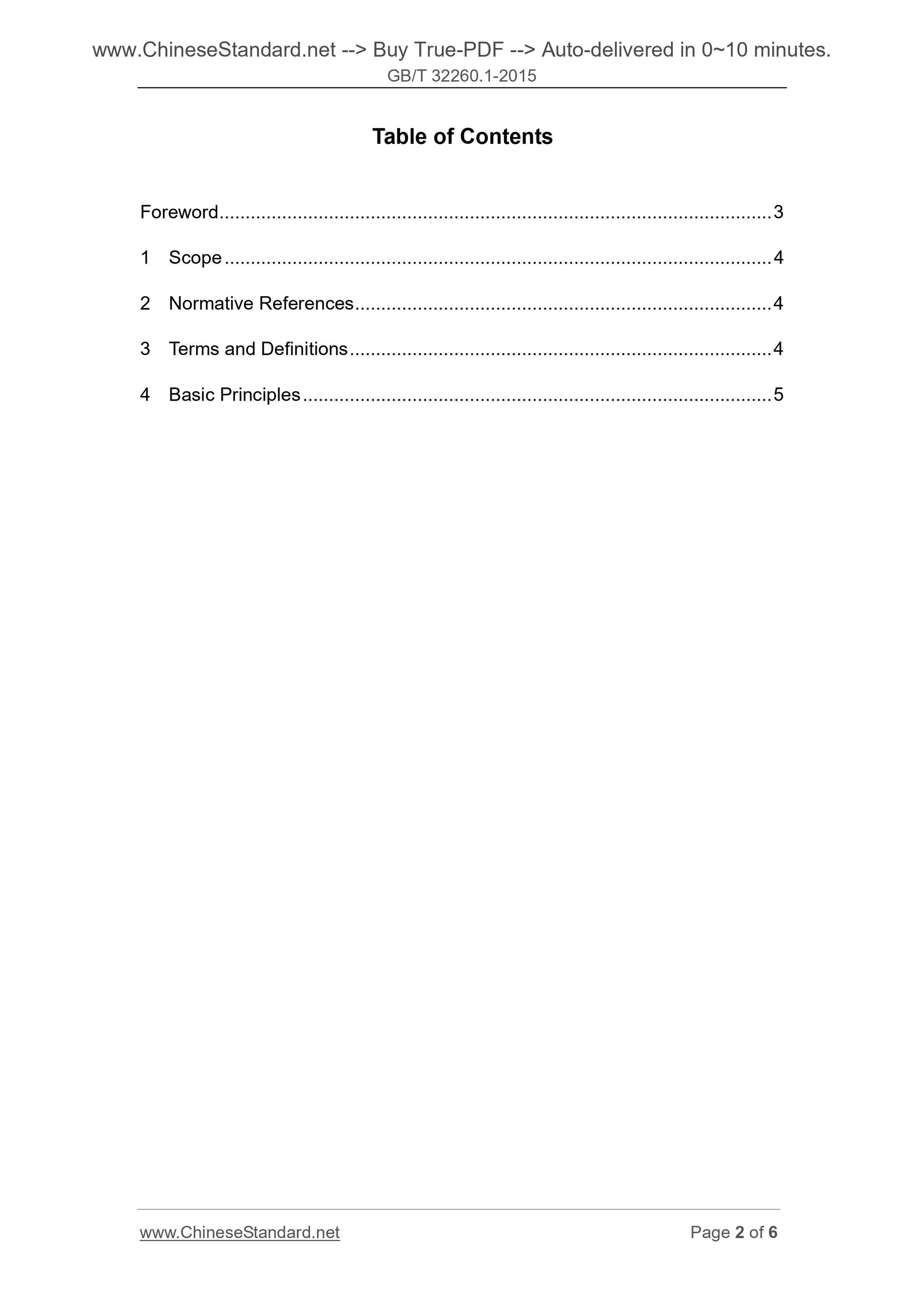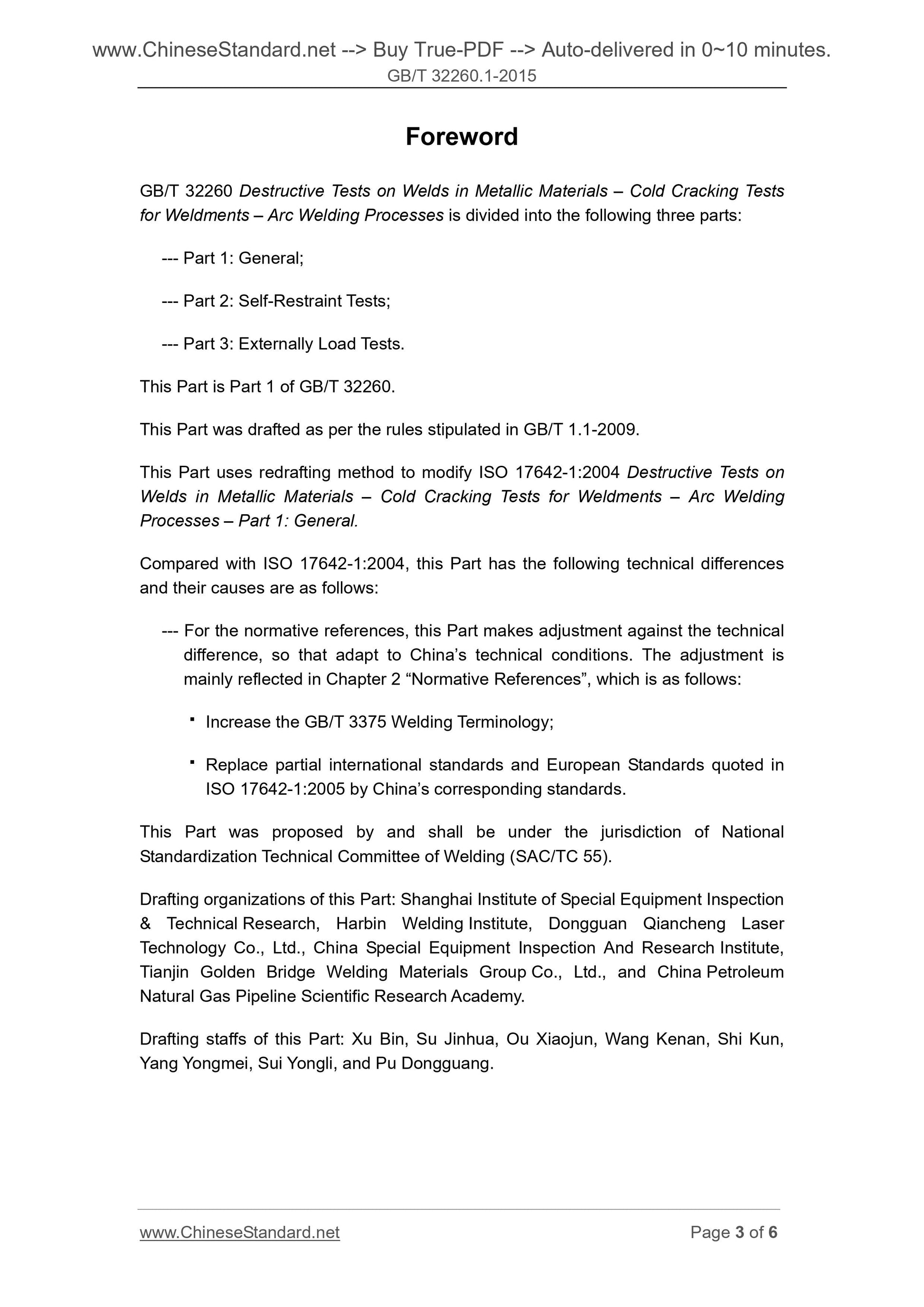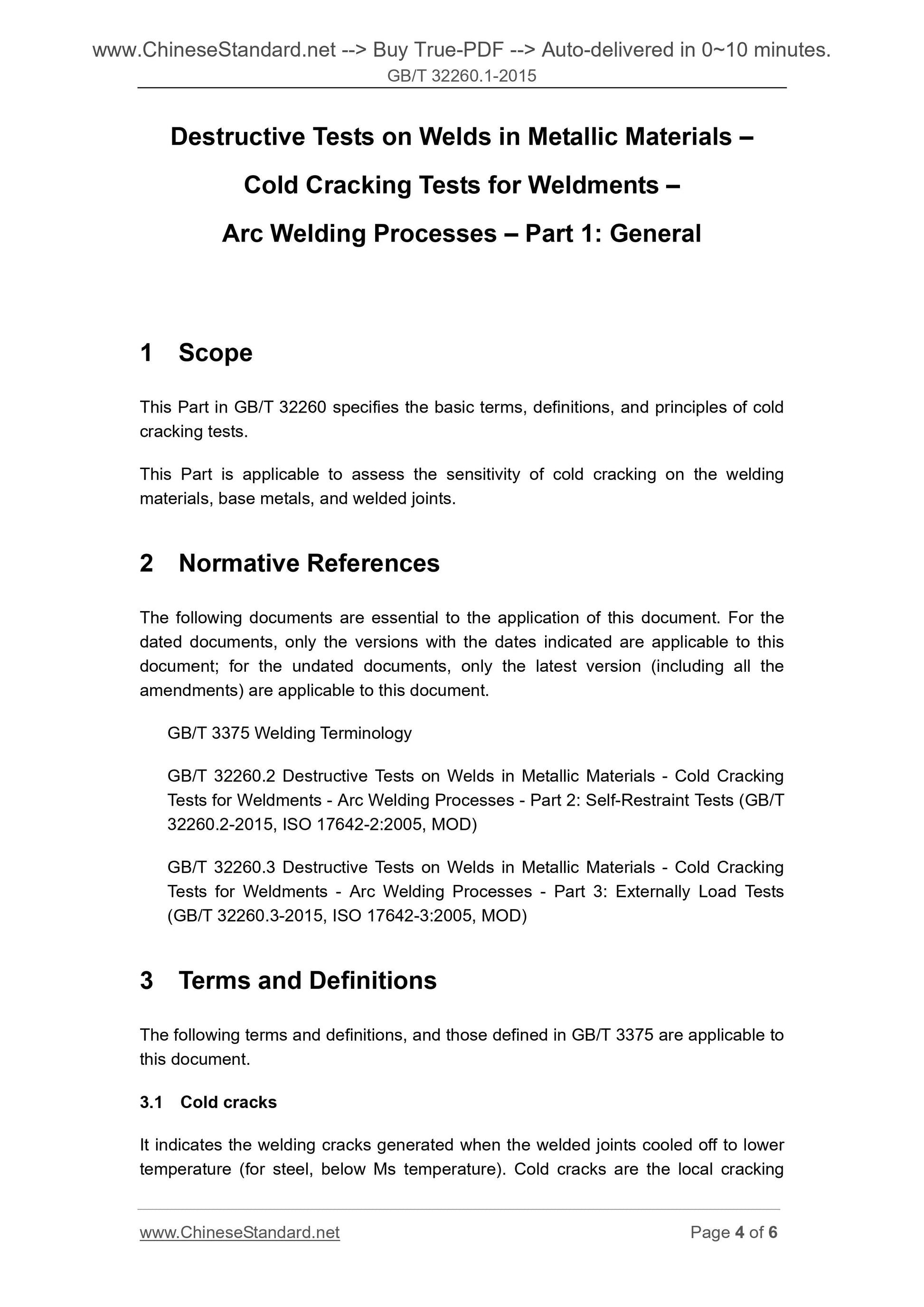1
/
of
4
www.ChineseStandard.us -- Field Test Asia Pte. Ltd.
GB/T 32260.1-2015 English PDF (GB/T32260.1-2015)
GB/T 32260.1-2015 English PDF (GB/T32260.1-2015)
Regular price
$90.00
Regular price
Sale price
$90.00
Unit price
/
per
Shipping calculated at checkout.
Couldn't load pickup availability
GB/T 32260.1-2015: Destructive tests on welds in metallic materials -- Cold cracking tests for weldments -- Arc welding processes -- Part 1: General
Delivery: 9 seconds. Download (and Email) true-PDF + Invoice.Get Quotation: Click GB/T 32260.1-2015 (Self-service in 1-minute)
Newer / historical versions: GB/T 32260.1-2015
Preview True-PDF
Scope
This Part in GB/T 32260 specifies the basic terms, definitions, and principles of coldcracking tests.
This Part is applicable to assess the sensitivity of cold cracking on the welding
materials, base metals, and welded joints.
Basic Data
| Standard ID | GB/T 32260.1-2015 (GB/T32260.1-2015) |
| Description (Translated English) | Destructive tests on welds in metallic materials -- Cold cracking tests for weldments -- Arc welding processes -- Part 1: General |
| Sector / Industry | National Standard (Recommended) |
| Classification of Chinese Standard | J33 |
| Classification of International Standard | 25.160.40 |
| Word Count Estimation | 4,476 |
| Date of Issue | 2015-12-10 |
| Date of Implementation | 2016-07-01 |
| Quoted Standard | GB/T 3375; GB/T 32260.2; GB/T 32260.3 |
| Adopted Standard | ISO 17642-1-2004, MOD |
| Regulation (derived from) | National Standard Announcement 2015 No.38 |
| Issuing agency(ies) | General Administration of Quality Supervision, Inspection and Quarantine of the People's Republic of China, Standardization Administration of the People's Republic of China |
| Summary | This standard specifies the basic terms, definitions and principles of cold cracking tests. This standard applies to the assessment of welding materials, cold cracking susceptibility of base metal and welded joints. |
Share
